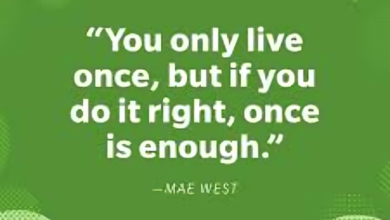10 Brilliant Ways to Make Use of Everyday Items You Already Have at Home
Introduction
In today’s fast-paced world, many of us are constantly buying new things—gadgets, storage boxes, cleaning products, organizers, tools, and more. But what if you could make use of the everyday items already lying around your home instead of spending more money? With a bit of creativity and practical thinking, common household items can be repurposed in incredibly useful ways.
This guide will walk you through 10 clever ideas on how to make use of everyday objects. These tips are not only budget-friendly but also great for reducing waste and promoting sustainable living. Let’s dive in!
1. Make Use of Glass Jars for Storage and Décor
Glass jars (from pickles, pasta sauces, or jams) are often thrown away or recycled. However, they’re perfect for organizing your home.
How to make use of them:
- Store dry goods like rice, lentils, pasta, and spices.
- Create beautiful DIY candle holders or mini vases.
- Use them as pen holders on your desk.
- Fill them with fairy lights for an aesthetic touch to your room.
Pro Tip: Label each jar for a neat, Instagram-worthy pantry or workspace.
2. Make Use of Old T-Shirts as Cleaning Rags
Instead of buying disposable cleaning wipes or cloths, repurpose your old T-shirts.
How to make use of them:
- Cut them into small squares for dusting or scrubbing.
- Use them to polish furniture or clean glass surfaces.
- Use as reusable napkins or kitchen towels.
This not only saves money but reduces textile waste.
3. Make Use of Toilet Paper Rolls to Organize Cables
Those empty cardboard rolls aren’t just trash—they’re the secret to a tangle-free life.
How to make use of them:
- Fold and insert cables inside each roll and place them in a drawer.
- Decorate with washi tape or markers for a creative touch.
- Store jewelry like bracelets or chains in them to prevent tangling.
This is especially handy for tech enthusiasts or anyone working from home.
4. Make Use of Shoeboxes as Drawer Organizers
Shoeboxes are the perfect size for sorting small items.
How to make use of them:
- Cut and arrange them inside your drawers to store socks, underwear, office supplies, or craft items.
- Wrap them in decorative paper to match your room’s theme.
This is a quick and easy DIY solution for messy drawers.
5. Make Use ofs Egg Cartons for Seed Starters
Planning a garden or just want to grow herbs in your kitchen?
How to make use of them:
- Fill each egg cup with soil and plant a seed.
- Place them on a sunny windowsill.
- Once they sprout, transfer them to bigger pots or your garden.
It’s a great way to reuse cartons and kickstart your gardening journey.
6. Make Use ofs Bread Clips to Label Cables
You’ve probably seen those tiny plastic clips on bread bags—don’t throw them away!
How to make use ofs them:
- Write the name of each device (e.g., laptop, printer, TV) on a bread clip.
- Clip it onto the appropriate cable for easy identification.
No more guessing which plug belongs to what device.
7. Make Use of Wine Corks for Creative Projects
Wine corks can be used in both functional and decorative ways.
How to make use ofs them:
- Create a corkboard by gluing them onto a wooden frame.
- Slice them to make custom stamps or coasters.
- Use them as plant markers by writing names and sticking a skewer through.
They’re eco-friendly and can add a rustic charm to your space.
8. Make Use of Hangers for More Than Clothes
Hangers, especially the ones with clips or hooks, have multiple uses beyond hanging clothes.
How to make use ofs them:
- Clip bags of chips or snacks shut to keep them fresh.
- Hang magazines or newspapers on a pants hanger for tidy reading corners.
- Use them to store scarves, belts, or jewelry.
Repurposing hangers helps clear up closet space while keeping other areas organized.
9. Make Use of Baking Soda for Cleaning
This kitchen staple isn’t just for cooking—it’s one of the most versatile cleaners you already own.
How to make use ofs it:
- Mix with vinegar to clean clogged drains.
- Sprinkle on carpets before vacuuming for a deodorizing effect.
- Use as a gentle scrub for sinks, bathtubs, and stovetops.
It’s non-toxic, budget-friendly, and safe for pets and kids.
10. Make Use of Ice Cube Trays Creatively
Ice cube trays are incredibly versatile and can be used well beyond freezing water.
How to make use of them:
- Freeze leftover herbs in olive oil for easy cooking cubes.
- Store small items like earrings, buttons, or paperclips.
- Make homemade chocolate or candy molds.
They’re a great organizational tool for kitchens, craft rooms, or offices.
Why You Should Start Making Use of What You Have
Repurposing everyday items:
- Saves money: No need to buy something new when you can DIY a solution.
- Reduces waste: Less trash going to landfills.
- Promotes creativity: Challenges your mind to think outside the box.
- Encourages mindfulness: Helps you become more aware of your consumption habits.
SEO Bonus: Frequently Asked Questions (FAQ)
Q1. What does “make use ofs” mean?
A1. “Make use ofs” means to use something for a practical or effective purpose, especially in a resourceful way.
Q2. How can I make use ofs old clothes besides donating them?
A2. Old clothes can be turned into rags, cushion stuffing, tote bags, or even DIY quilts.
Q3. Is it really effective to make use ofs things instead of buying new ones?
A3. Absolutely! Many household items have multiple purposes and can be just as effective when reused creatively.
Q4. How can I teach kids to make use ofs household items?
A4. Involve them in simple DIY projects, crafts, or storage ideas using items like cartons, jars, and paper rolls.
Conclusion
Make use of what you already have isn’t just a trend—it’s a lifestyle choice that benefits your wallet, your home, and the planet. By repurposing everyday items in creative ways, you’re reducing waste, saving money, and discovering the hidden potential in ordinary objects.
Start small: pick one of the tips above and give it a try today. You’ll be surprised how satisfying it can be to transform “junk” into something useful, beautiful, or both!
If you’d like a PDF version, social media snippets, or a translated version of this article, just let me know!


